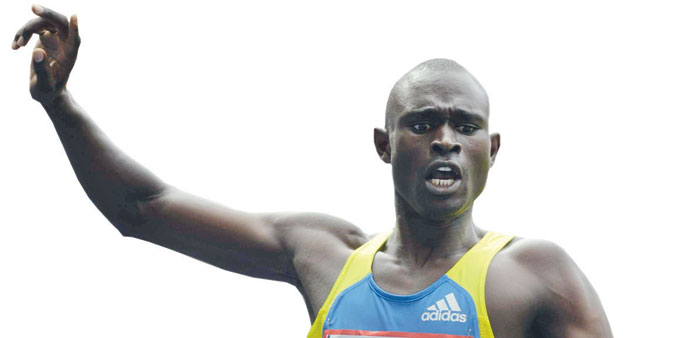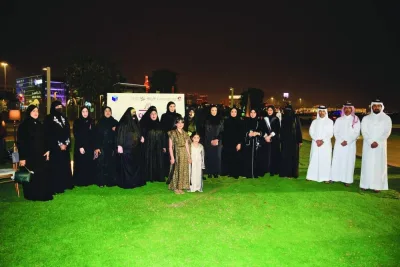By Jason Patinkin/DPA
Welcome to Iten, Home of Champions” is written on the archway at the entrance to this small western Kenyan town that is famous for producing the fastest runners on earth.
Iten’s nickname is no exaggeration.
Hundreds of Kenya’s top runners train here, from 800 metres world record holder David Rudisha to Wilson Kipsang, who ran the fastest marathon in Berlin last September.
Past winners of Rome, Rotterdam, and countless other marathons also call Iten their home.
The local St Patrick’s High School has sixteen trees planted in its courtyard - one for each student who has won a junior world championship, world championship, or Olympic medal.
If not for all the elite athletes, Iten would be like any other town in Western Kenya.
There are only two paved roads. People live in either simple concrete homes or mud and thatch huts and tend to fields of maize and coffee. Traffic, and runners, weave around goats and cows wandering the roads.
But in recent years, Iten has become a sort of running Mecca, attracting everyone from top foreign Olympians to amateur joggers who want to immerse themselves in the unique running culture.
“If you want to learn how to run, you need to come to Kenya,” says Gian Camathias, from Trin, Switzerland, who is here preparing for the Stockholm marathon. “The conditions here are just perfect.”
Perched on a plateau with stunning views at the edge of the Great Rift Valley, Iten is 2,400 metres above sea level, an altitude that helps distance runners build lung capacity. The mild climate allows year-round running, and the relatively flat terrain is good training for road races.
At the centre of Iten’s running scene is the High Altitude Training Center (HATC), a hotel designed for world class athletes. The HATC was opened 15 years ago by Kenyan runner Lornah Kiplagat, a women’s world cross country champion.
There’s a gym, a pool, a track, and a virtual Olympic podium of guests.
When dpa visited, Mo Farah - who won gold in the 5,000 and 10,000 meter races at both the 2012 London Olympics and 2013 world championships - stopped by a fruit stand near the gate. In the weight room, Algerian Taoufik Makhloufia, winner of the 1500 meter gold at London, dropped in to pick up an entrance pass for the track.
Richard Mukche is the head trainer at the HATC. He says one reason people come to Iten to train is to soak up the local Kenyan way of complete devotion to the sport.
“Kenyans just do running, eating, and sleeping,” he says. “Nothing else.”
The typical Kenyan training regime centers around blistering morning workouts that leave some foreign visitors in the dust.
“In Europe you just slow down, watch your pulse rate, see what your average tells you,” says Wilhelm Liege, an Austrian Olympic coach from Vienna who has been coming to Iten for years. “Here they take it simple, push it hard, and win medals.”
Kenyan runners take their eating and sleeping just as seriously. They load up on carbs, local foods like fried pancakes called chapatti or ugali, a thick maize meal, and spend the rest of the day sleeping.
“That’s really the important thing,” says Mukche. “An athlete has to rest and rest a lot, your body needs to relax. If you don’t relax, you’ll be exhausted.”
Why the hilly country around Iten produces so many great athletes is a matter of some scientific inquiry.
The altitude plays a part, and the locals, mostly members of the Kalenjin tribe, are lithe and not very tall with narrow calf muscles that add little weight to their legs.
But Mukche says the real reason is beyond genetics.
“Some say it’s in the blood, but I think it’s in the mind,” he says.
“You grow up running. When you wake up you see people running.
That’s motivation.”
There’s no better time to see that motivation than on Monday morning, or as the locals call it, “Crazy Monday.”
At five in the morning, the sky is still black and full of stars, but joggers are already racing along Iten’s main road in the dark.
By the time the sun rises over the Rift Valley, bathing Iten in golden light, there are hundreds of people running in groups of thirty or more, pounding up and down the red dirt paths.
If you don’t have a group, you can just join up with a team that passes by, that is if you can keep up. On “Crazy Monday” the pace is around 3 minutes per kilometer, a fast start to a week that only gets faster.
“If you train like this in Switzerland most people will think you’re crazy,” says Camathias. “It’s like a race in every training.”
Ruben Sabot, 26, an up and coming Kenyan runner, has a simple explanation for the fast pace.
“People have a lot of energy after Sunday so we run faster on Monday,” he says after finishing his morning run near Iten’s entrance.
Sabot is like most of the runners here: young, fast, and unknown. Jobs are scarce in Kenya, so his parents sent him here to train hoping he becomes the next Kipsang or Rudisha.
It can take a decade to reach the top echelon, and Sabot has trained here for four years supported by his parents. He freely admits that along with his love of the sport, money is a main reason why he runs.
With a marathon time of 2 hours 20 minutes, he’s still well shy of the 2:07 mark that puts a runner on the cusp of the international circuit, but he isn’t giving up yet.
“That talent God has given me,” Sabot says, stretching his legs and looking toward the Home of Champions arch. “I must follow my dream.”



